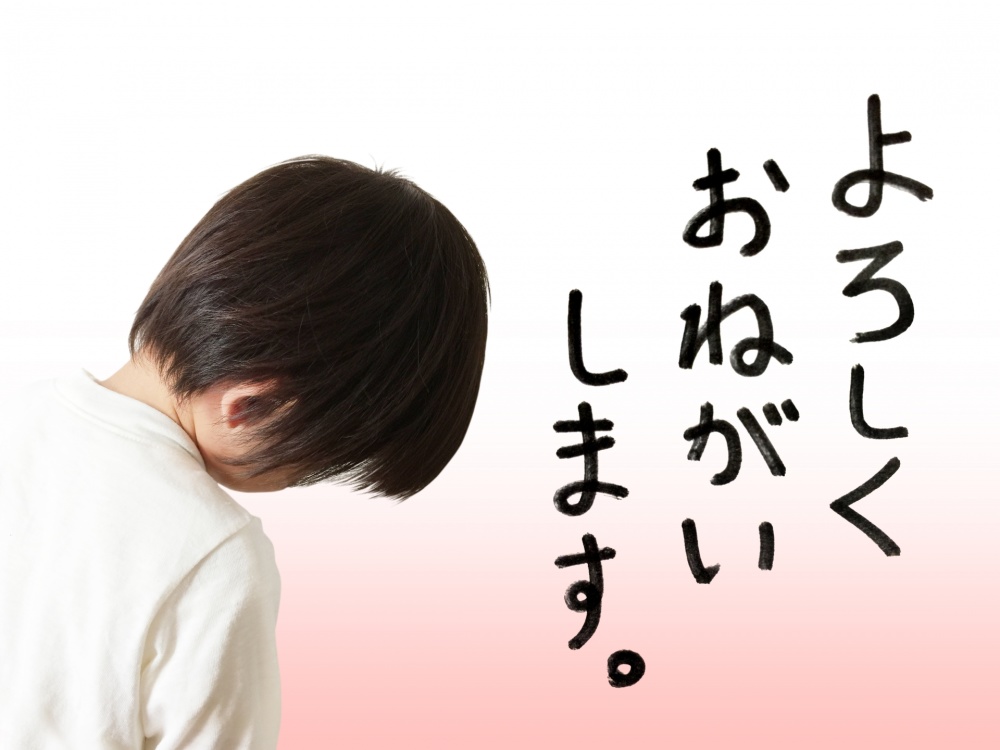Updated July 18, 2024
Please Be Kind To Me: The True Meaning of Yoroshiku Onegaishimasu
Japanese is a "high-context" language, so understanding certain cultural concepts and common sayings can be a real challenge for foreigners moving to Japan.
Oftentimes, Japanese people don’t directly state what they mean, and the recipient has to suss out the true meaning from contextual cues.
This results in an abundance of words and phrases with meanings that change according to the time, place, and setting. We already explored a few of these in my other posts, like “Daijobu in Japanese” and “The Meaning of Ostukaresama.”
This time, let’s look at another popular phrase: Yoroshiku or Yoroshiku Onegaishimasu (よろしくお願いします). This versatile phrase can be a greeting when meeting someone for the first time, but its meaning can depend on context.
I’ll show you how to use it correctly and provide some useful alternatives, so stick around until the very end.
The Literal Meaning of Yoroshiku
Before we talk about the culturally relevant meaning of Yoroshiku Onegaishimasu (よろしくお願いします), let’s first look at it from a linguistics standpoint.
Trying to translate the phrase as literally as possible, we get something like “please (do me) well” or “I hope you treat me well/favor me.” This can sound like pleading, so why is it such a popular phrase in daily life?
Like many other sayings, the phrase has lost its original meaning over time, leaving in its place a common expression that can be utilized in many ways.
This adaptability is why the phrase can be used in situations like when introducing yourself to someone for the first time or when asking someone to do something for you. You simply want and openly wish that things start off on the right foot, or go on positively, implying good intentions.
So, Yoroshiku onegaishimasu can really mean any of the following:
I’m in your debt
I’m counting on you
Be kind to me
Please take care of me well
Pleased to meet you
As you can see, while it has an overall positive feeling, the phrase can be used in a wide variety of ways. So, let’s look at a few of those in more detail.
Saying Yoroshiku at Work and In Formal Settings

As I said, when you meet someone for the first time, it’s common to say “Yoroshiku onegaishimasu”, which is a formal use of the phrase, as you’re just meeting the person.
If you’ve already read my “me in Japanese” and “Japanese greetings” posts, introducing yourself can be as simple as:
Konnichiwa, watashi wa Emily desu. Yoroshiku onegaishimasu (こんにちは, 私 は エミリ です。よろしく お願いします。)
This form is also suitable for asking somebody at work to do something for you or when you’re asking for a favor in a non-casual context. You can say よろしく お願いします at the end of your request, which is sort of like thanking someone in advance or thanking them for their expected help.
As Yoroshiku onegaishimasu can also mean “please take good care of me”, you’ll also hear it when someone drops something off at a repair shop, orders something to be made, and even when parents leave their children at daycare. Basically, it conveys the message “I’m at your mercy, it’s up to you now” in a grateful way.
However, there’s an even more formal version of the phrase you can use, and it’s when you’re writing an email or a message in a business context. To end your email, simply close with a “Yoroshiku onegai itashimasu (よろしくお願ねがい致します).” This will work as a sign-off, especially if you’re writing regarding a request.
Lastly, another situation where you’ll hear Yoroshiku ongaishimasu in a formal context is when a business asks for your understanding. For instance, if your private Japanese tutor cancels a class due to health problems, they’ll usually say Yoroshiku onegaishimasu to thank you for being understanding.
Saying Yoroshiku in Casual Settings, Among Friends
While a common formal/work phrase, Yoroshiku can also be utilized in many casual situations. In the cases I’ll explain below, simply saying Yoroshiku is often enough, as it’s the casual form.
Sending Your Regards To Someone
Yoroshiku can be a handy phrase for when you want to send your regards to someone. Let me explain.
Assume you run into a friend’s spouse when you’re out and about. You say hi, you get to talking, and when you’re done, you want them to say hi to your friend on your behalf. What do you say?
Yoroshiku, in this context, can take on this meaning as well. So, to say hi to your friend Emily, for instance, all you need to do is end the conversation with a “エミリによろしくを伝えてください" or “Emiri ni yoroshiku wo tsutaete kudasai” which translates to “Please say hi to Emily on my behalf.”
Saying thank you to your friends
Another use case is when you want to thank your friends for doing something.
In this context, the phrase can be translated as “Thanks!” or “I’m counting on you!”
If you made plans to have a barbeque with your friends, for instance, and they’re offering to bring drinks, you can just say “Yoroshiku” to mean “Thanks!”.
Yoroshiku as a New Year or Birthday Greeting

Yoroshiku can even be used as a New Year’s greeting. In the first moments of the new year, you can say to your friend, “あけましておめでとうございます。今年もよろしくお願いします (Akemashite omedetō gozaimasu. Kotoshimo yoroshiku onegai shimasu)” which means “Happy New Year! Please take care of me this year as well”, to show that you’re hopeful for the coming year.
For more ways to say Happy New Year and learn about Japanese New Year traditions, check out my other post.
Similarly, Yoroshiku also goes well as a birthday greeting. It means that you’re hopeful that you will be treated well in the coming year too.
For instance, if you receive a gift from someone, you can thank that person and say, “これからもよろしくお願いします (Korekara mo Yoroshiku Onegaishimasu)” which means that you wish to maintain your good relationship in the future.
Yoroshiku as “Please Come Again”
Finally, while not among friends, you can also hear another casual use of Yoroshiku when you’re out shopping.
Usually used by shopkeepers when you’re leaving the shop, especially if you’re leaving empty-handed, the phrase Dozo yoroshiku, or Yoroshiku dozo, means “hope you’ll come again”.
This isn’t to bully you into buying anything, but a grateful “hope you’ll come again” message. Shopkeepers who speak in a more polite form may also say Yoroshiku onegaishimasu here as well, which conveys the same meaning.
Responding To Yoroshiku
Knowing how to use Yoroshiku properly gets you only halfway there, as it’s equally important to know how to respond when someone says it to you. Thankfully, this is the easy part. Let’s have a look at different cases.
Firstly, if you’re being greeted with Yoroshiku and someone’s introducing themselves to you, you can simply respond by saying “よろしく お願いします (Yoroshiku onegaishimasu)”. Easy enough, right?
If you want to put a little more emphasis on it, you can also say “こちらこそ よろしく お願いします (Kochira koso, Yoroshiku onegaishimasu). It amplifies that it’s also nice to meet them, like saying “Likewise” would.
That’s all good and well, but say a coworker asks a favor of you, or your superior needs something done, and they say this phrase. What do you say then?
In this case, it’s much more appropriate to say something that means “Of course!” or “Sure thing!”, so saying かしこまりました (Kashikomarimashita), which means “certainly,” can be more fitting.
As I said, once you start getting better at reading Japanese social cues and understanding how Japanese people usually act in certain situaions, using and responding to the phrase will become much easier.
In the meantime, if you want to learn more about a curious concept that influences Japanese culture, my post on Honne and Tateamae may be an interesting read.
Other Common Japanese Phrases That Mean Yoroshiku
By now, you know that “Yoroshiku” is one of those ubiquitous words or phrases that shapeshifts depending on the context.
So, here are a few alternative phrases for various situations where you can use Yoroshiku, so you can pick one that’s more fitting instead and broaden your vocabulary.
For instance, when you meet someone for the first time, you don’t always have to say Yoroshiku onegaishimasu. You can say “Hajimemashite, はじめまして” instead, which is another common greeting I talked about in my post on Japanese business cards.
Hajimemashite can be translated as “This is the first time I’m meeting you,” but it sounds less cold and distant than the English translation. It’s also common to use it together with Yoroshiku.
Alternatively, for greetings, you have lots of simpler phrases like Ohayou gozaimasu, Konnichiwa, and Konbanwa which are used depending on the time of day, like “good morning”. To learn even more Japanese greetings, be sure to read my dedicated post.
Concluding Words on Yoroshiku

By now, you know that Yoroshiku is one of the most versatile tools you can have in your arsenal as a Japanese learner. Even if you aren’t actively learning Japanese, knowing which situations to use the phrase in and being able to recognize it when someone says it to you should make your life in Japan easier.
So, to go over the plentiful meanings and translations of Yoroshiku:
In a general context, the phrase can mean “I’m in your debt.” or “Please treat me well.” Basically, when you want something to go well, but how it goes isn’t up to you, you can use Yoroshiku.
Among friends, the phrase can take on several meanings, like “say hi on my behalf” or in celebratory situations like during the new year or a birthday.
In a formal context, you can also say the formal version of the phrase when meeting someone for the first time or signing off a work e-mail.
When you leave your child at daycare to tell the teacher or whoever’s in charge to take good care of your kid.
As you see, Yoroshiku is always a positive word, with sometimes grateful and hopeful undertones. It implies that something’s up to someone else and that you’re wishing for the best.
So, next time you meet someone new, you can safely use the phrase, which is arguably its most common use case in daily life.
If you want to dive deeper into Japanese, I recommend checking out my Best Tools for Learning Japanese post right after this.
Get Job Alerts
Sign up for our newsletter to get hand-picked tech jobs in Japan – straight to your inbox.







